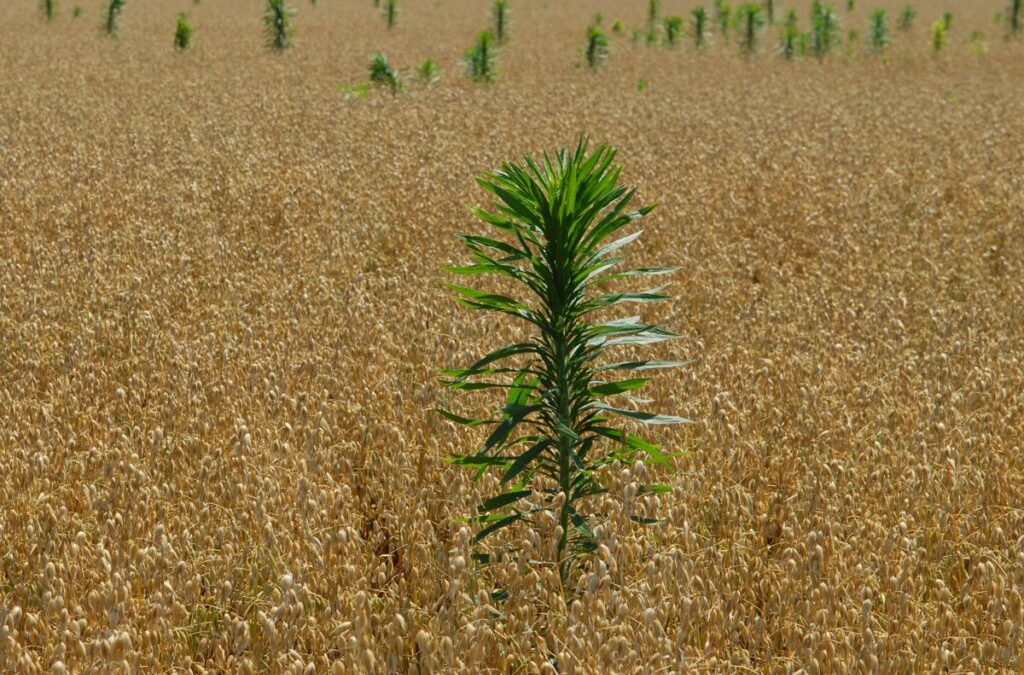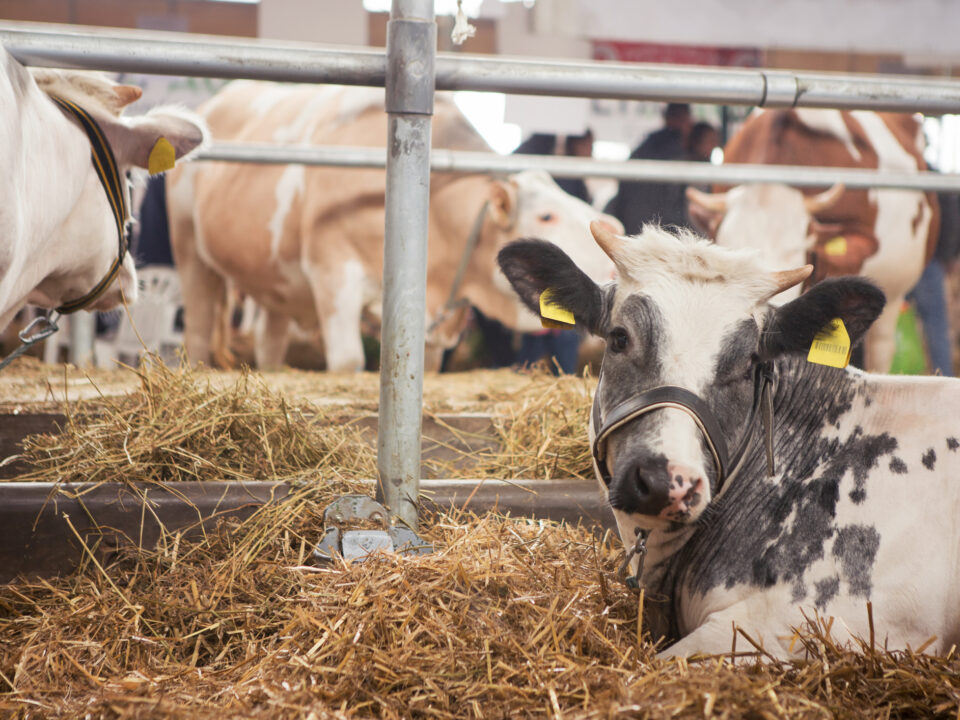
Not all weeds are created equal. There are “Leaders of the Pack,” called Driver Weeds. Determining and focusing on Driver Weeds ensure you have the best herbicide plan for all weed control.
Our agronomists work closely with farmers. Whether it’s walking side by side or using drone technology, the agronomists are constantly observing the soil and plant health from the earliest working of spring ground through late into harvest. In 2016, it was clear that the two types of Driver Weeds that were affecting fields in the Luckey Farmers footprint were Marestail and Giant Ragweed.
Below are the characteristics of these two problem weeds and ways you can work with your agronomist to stop them in their tracks.
Marestail:
- Marestail has two primary periods of emergence, late summer into fall, and early April into June.
- Marestail plants overwinter in the rosette stage, which will start stem elongation earlier than spring emerging plants.
- Marestail is most easily controlled when in the seedling or rosette stage.
- Marestail plants can produce up to 200,000 seeds that can be transported by wind.
Example of soybean yield loss:
- 51 bu/A burndown treatment failed to control emerged plants
- 57 bu/A burndown treatment was effective, but no residual herbicide
- 65 bu/A burndown was effective and included residual herbicides
The most effective strategy steps for Marestail control in No Till Soybean:
- Use fall herbicide treatments in fields with a history of problems or where Marestail seedlings are observed in the fall. Consider using 2,4-D as the base herbicide to control Marestail, and combining it with roundup, dicamba and possibly a low cost residual to ensure control of weeds.
- Apply an effective burndown herbicide in the spring. Do not plant into existing stands of Marestail. Start weedfree at the time of planting by using a burndown herbicide treatment, applied when Marestail plants are still in the seedling and rosette stage.
- Include a non ALS (many Marestail plants are now resistant to ALS chemistry) residual herbicides with the burndown treatment for residual control of Marestail until the soybean leaf canopy develops.
- Failing to treat fields in the fall can result in a population of overwintered Marestail plants the following spring. This should be controlled early in the spring to ensure effective burndown before plants bolt.
Controlling Marestail
Fall application needs to focus on controlling the Marestail seedlings and rosettes that emerged in the fall, with 2,4-D, possibly dicamba, roundup, and a low cost residual. Apply a spring application control for Marestail in the seedling or rosette stage. You may need to apply twice if there was no prohibitive treatment in the fall.
Giant Ragweed:
- This annual weed emerges as early as April and will continue to germinate through early summer.
- Giant Ragweed is extremely competitive and is difficult to control in soybeans.
- Its ability to germinate and emerge from deep in the soil allows it to escape many soil applied herbicides.
- The densest populations occur in tilled soil; populations can decrease in long term no-till with proper management.
- Giant Ragweed has developed resistant to Group 2 and Group 9 herbicides.
- Giant Ragweed is best controlled at 4 to 10 inches depending on what Soybean Seed trait (ex: Non GMO, Roundup, Liberty, etc.) is used.
- If you have giant ragweed this should be your weed that you make your herbicide recommendations around
An effective strategy for Giant Ragweed control in Soybeans:
- No Till: by not tilling the soil, this will reduce seed to soil contact and you will have less Giant Ragweed seeds germinate.
- Use of a residual herbicide is a must in fields containing Giant Ragweed for control and to prevent herbicide resistance.
- It is essential that No Till Soybeans fields receive an application of 2,4-D with Roundup for a burndown. Fields with heavy infestations of giant ragweed should also receive an application of residual herbicide.
- Moderate to dense Giant Ragweed populations need a residual herbicide and two post applications may be necessary, early post followed by a second application to control late emerging plants.
- Mix the chemistry up to mitigate any chance for giant ragweed to develop herbicide resistance.
Summary:
For Giant Ragweed weed control: a combination of burndown, residual, followed by postemergence herbicides applications provide the best solution for Giant Ragweed control.
Luckey Farmers gives personal recommendations based on your field and your individual needs. Contact your local agronomist today or call 419-849-2711 for more information.



